US History of Tourism: Ford Tri-Motor 1929 – Coast to Coast Part II
Coast to Coast Travel: Inauguration Day in Los Angeles
The same day at Grand Central Air Terminal near Los Angeles, two Ford Tri-Motor 1929 were christened. The TAT Tri-Motors were the Ciry of Los Angeles and the City of Philadelphia. Mary Pidcford christened the City of Los Angeles, and Gloria Swanson christened the Ciry of Philadelphia.
A huge crowd of approximately 30,000 turned out for the christening and viewed the historic beginning of transcontinental service to the east.
Charles Lindbergh piloted the City of Los Angeles on its inaugural travel to the east. (2)
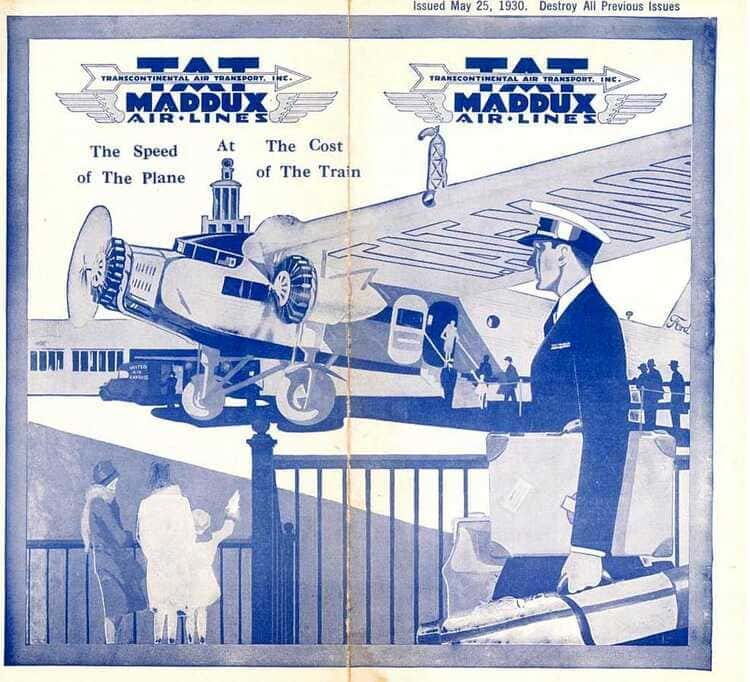
TAT – MADDUX Airline Brochure – May 25, 1930 “Western Division” (ex-Maddux Air Lines) Image from the collection of Bjorn Larsson
Passengers on the City of Los Angeles Plane:
- A.L. Rocklcin (LA Examiner)
- T. Delapp (LA lima)
- Jack Scanlon (Los Angeles)
- M.D. Schatrman (Los Angeles)
- Thomas B. Eastland (San Francisco. Director TAT)
- R.W. Millar (Los Angeles)
- Anne Morrow Lindbergh (Wife of Charles Lindbergh)
- Major C.C. Moseley (Vice President, TAT)
- Dr. W.J. Furie (Long Beach. California)
The passengers on the City of Philadelphia Plane
- Albert Hitchin (Insurance Broker, Los Angeles)
- R.K. Rochester (Vice President, Pennsylvania Railroad)
- Mrs. R.K. Rochester Charles Walker (Fox News, Los Angeles)
- Miss Velva Darling (Los Angeles)
- John B. Austin (President. Chamber of Commerce, Los Angeles)
- Turner Wills (Los Angeles)
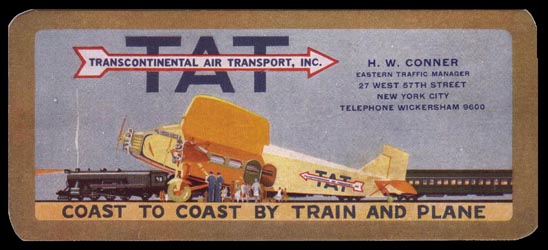
Charles Lindbergh that day flew the plane “City of Los Angeles” to Winslow, Arizona. From there, the next day on July 9, Charles Lindbergh flew the City of Philadelphia, back to Los Angeles. With the return flight, traveled Amelia Earhart and his wife Anne Morrow Lindbergh.
A curiosity: Upon arrival in Los Angeles (Glendale) there was a second christening of the Ford Trimotor 1929 City of Philadelphia. Again Gloria Swanson, movie star, christening for the second time the City of Philadelphia. Some 20,000 people attended the second christening of the plane that had just completed the first voyage of the transcontinental passenger airline.
During the first month of TAT ( Lindbergh Line) operations, 153 passengers traveled the entire route. Also 280 passengers made shorter trips between intermediate points. TAT reported that its passenger transport capacity index was 37 percent. 99.4 percent of scheduled miles were completed. The planes flew 113,240 of the planned 113,957 miles. The number of passengers and miles traveled increased during the following months.
Ford Tri-Motor 1929: Two Air Crash in Five Months
On September 3, 1929, a Ford Tri-Motor 1929 5-AT-21B NC 9647 “City of San Francisco”, westbound TAT flight crashed into Mt. Taylor in New Mexico. “All passengers and crew aboard died. The Associated Press said it was the first plane crash on a regular commercial land route. The September accident was the first of three serious accidents for TAT in the next five months. It was the first disaster of a commercial airline.
On January 19, 1930 TAT Flight Number 7, Ford Tri-Motor 5-AT-C crashed north of Oceanside, California. The plane encountered rain, low clouds, fog, and possibly engine problems, Flying from the races at Agua Caliente, near Tijuana, Mexico to Los Angeles.
The left wing struck the ground, slamming the aircraft into the ground, which subsequently caught fire. The pilots and all 14 passengers aboard died in the crash. Charles Lindbergh, as chairman of TAT technical committee, was involved in the investigation.
Ford Tri-Motor 1929 & Western Air Express
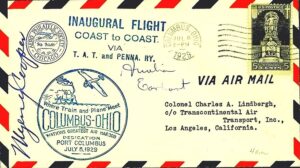
After the first accident many of the Transcontinental Air Transport passengers chose the train. TAT began offering more services on board, but they had no effect. The fall of the stock market in October 1929 plus the second accident, put Transcontinental Air Transport on the verge of Bankruptcy
The government offered airlines long-term mail contracts in exchange for buying larger and safer airplanes for passenger transport.Transcontinental Air Transport, which did not carry mail, merged with Western Air Express, which already had a contract with the government. The merger was announced on October 25, 1930. The company that later became TWA stopped operating its train service. From that moment on, the entire route began to fly with only one night stop in Kansas City..
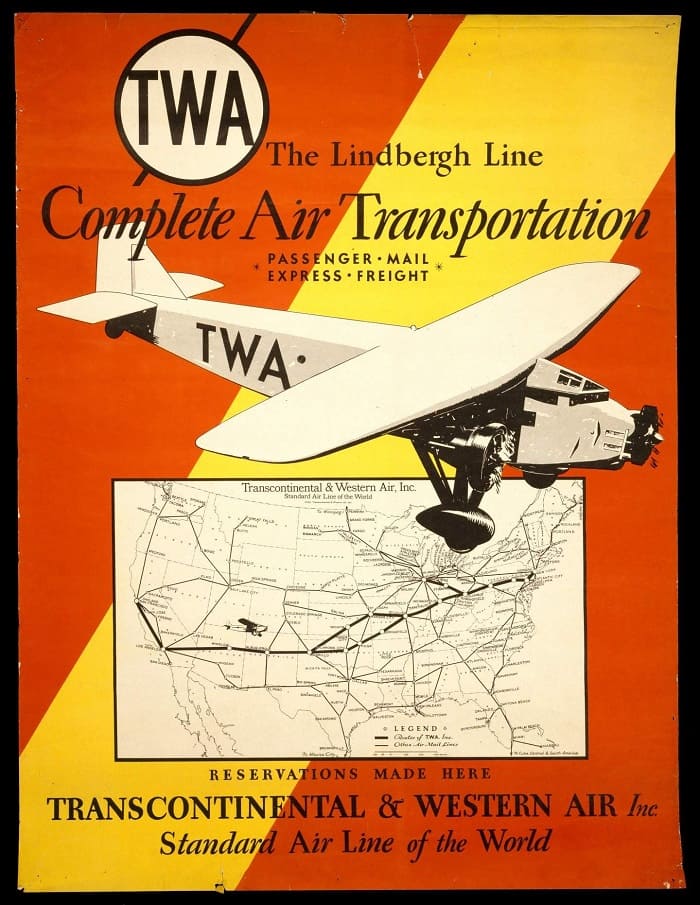
Ford Tri-Motor Today
At present there are almost 18 Ford Trimotor among those that are in operation, restoration and exhibition in museums. We will deal with this later in another note.
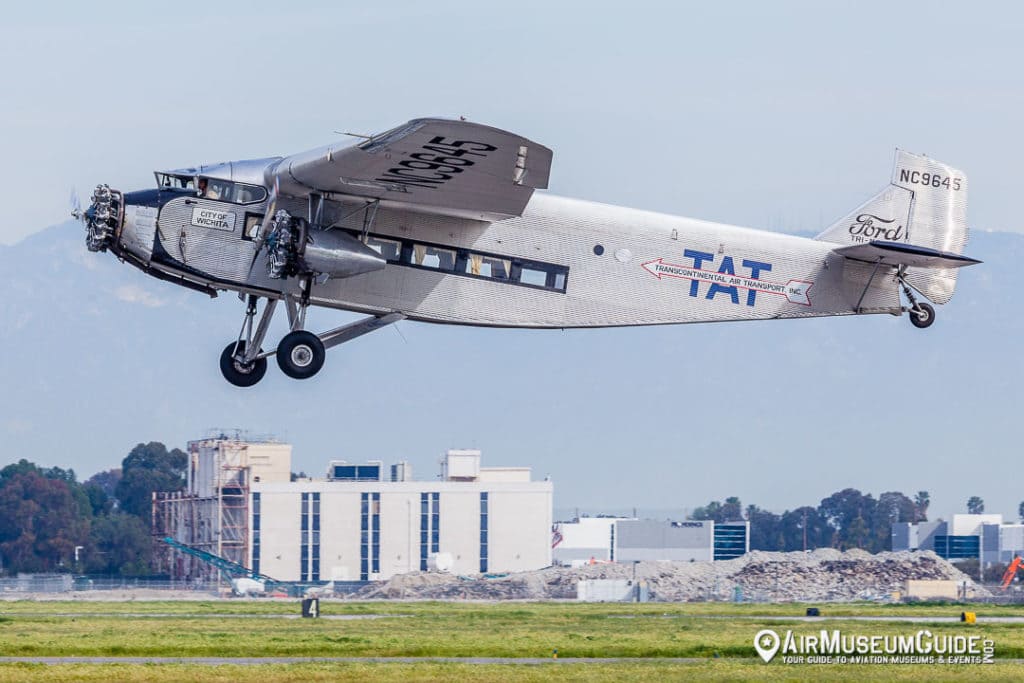
.
Tips of First Coast to Coast Flight: US History of Tourism – TAT
- The one-way fare from New York to Los Angeles was $ 352. It would be worth about $ 5,000 in 2019
- The trip lasted 48 hours – Train & Ford Trimotor
- The height of the flight was 8,000 feet.
- People made fun of the airline abbreviation (TAT) interpreting it as “Take A Train”
- The trip was a hard physical endurance test
- TAT was also called The Lindbergh Line
Sources First Coast to Coast Flight
- The Smithsonian Air & Space
- Flying In lingbergh Line – Robert F kirk
- The Building of an Airport : Port Columbus Robert F kirk
- Journal American Aviation Historical Society
- The Smithsonian Ford Plane
- Liberty aviation museum.org
- EAA Aviation Center – 3000 Poberezny Road – Oshkosh, WI 54902
- Palm Springs Air Museum
- Air Museum Guide
![Ford Tri-Motor - Flying the Lindbergh Line: Then & Now: (Transcontinental Air Transport’S Historic Aviation Vision) de [Kirk, Robert F.] Flying the Lindbergh Line: Then & Now: (Transcontinental Air Transport’S Historic Aviation Vision) de [Kirk, Robert F.]](https://images-na.ssl-images-amazon.com/images/I/51XTKvrD26L.jpg)
US History of Tourism: Ford Tri-Motor 1929 – Coast to Coast Part I
Related Post
- Travel gadgets for Hiking
- Thomas Cook History of Tourism
- The Grand Tour – History of Tourism
- Luggage & Backpack
- eReaders
- National Park Smoky Mountains
- Tourism in Roman Empire


![The Building of an Airport: Port Columbus: “America’s Greatest Air Harbor” 1929 de [Kirk, Robert F.]](https://images-na.ssl-images-amazon.com/images/I/51FTI1116nL.jpg)